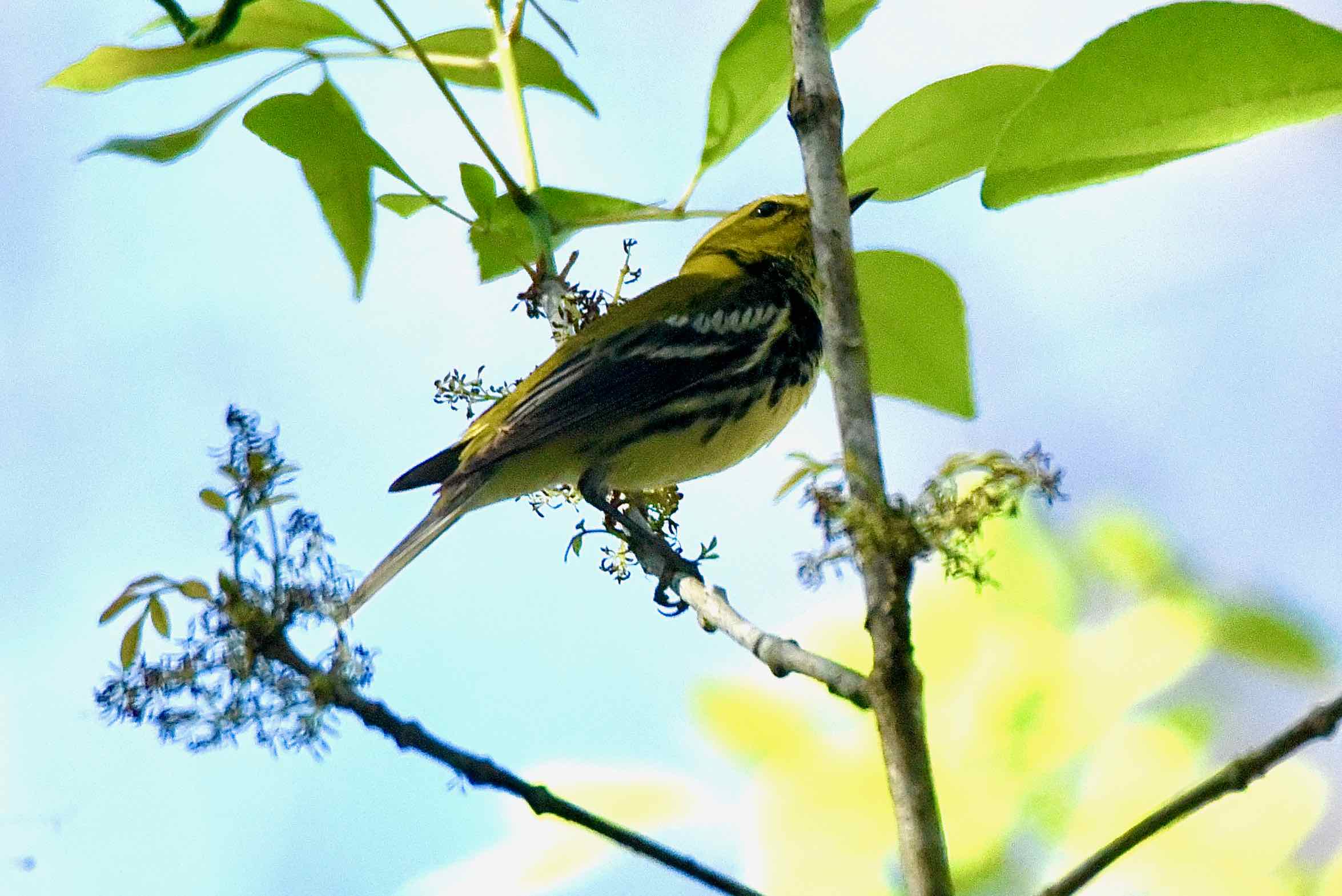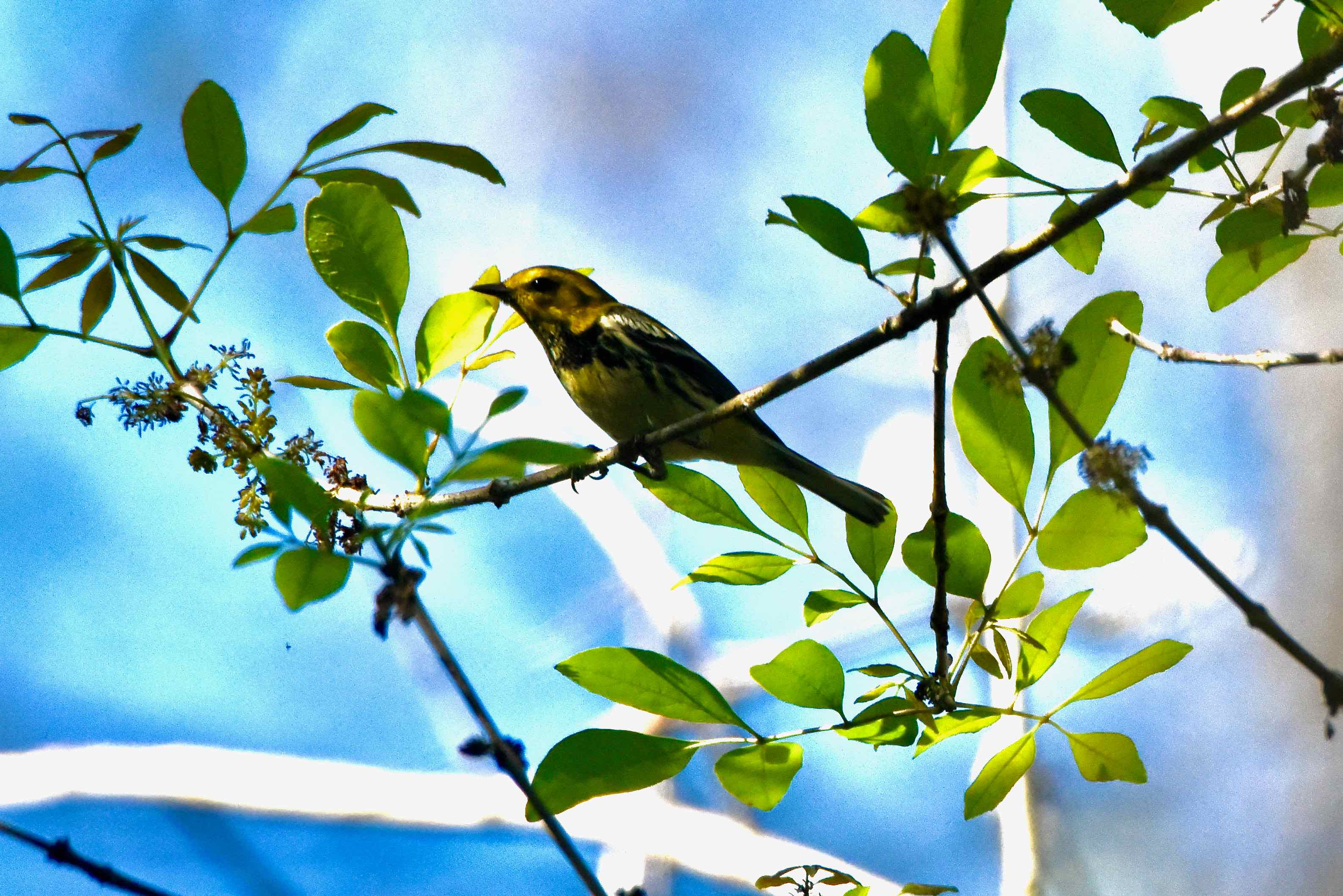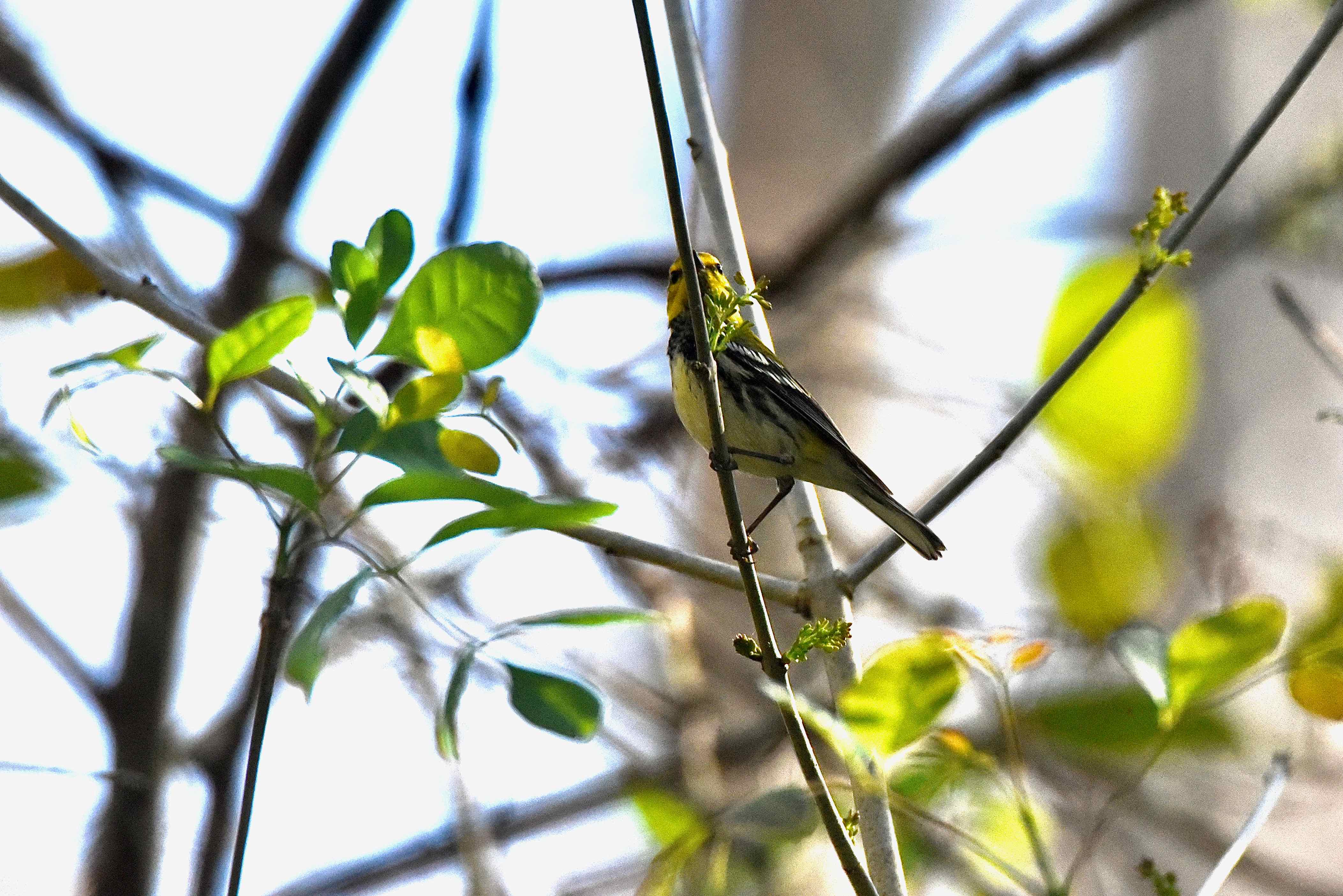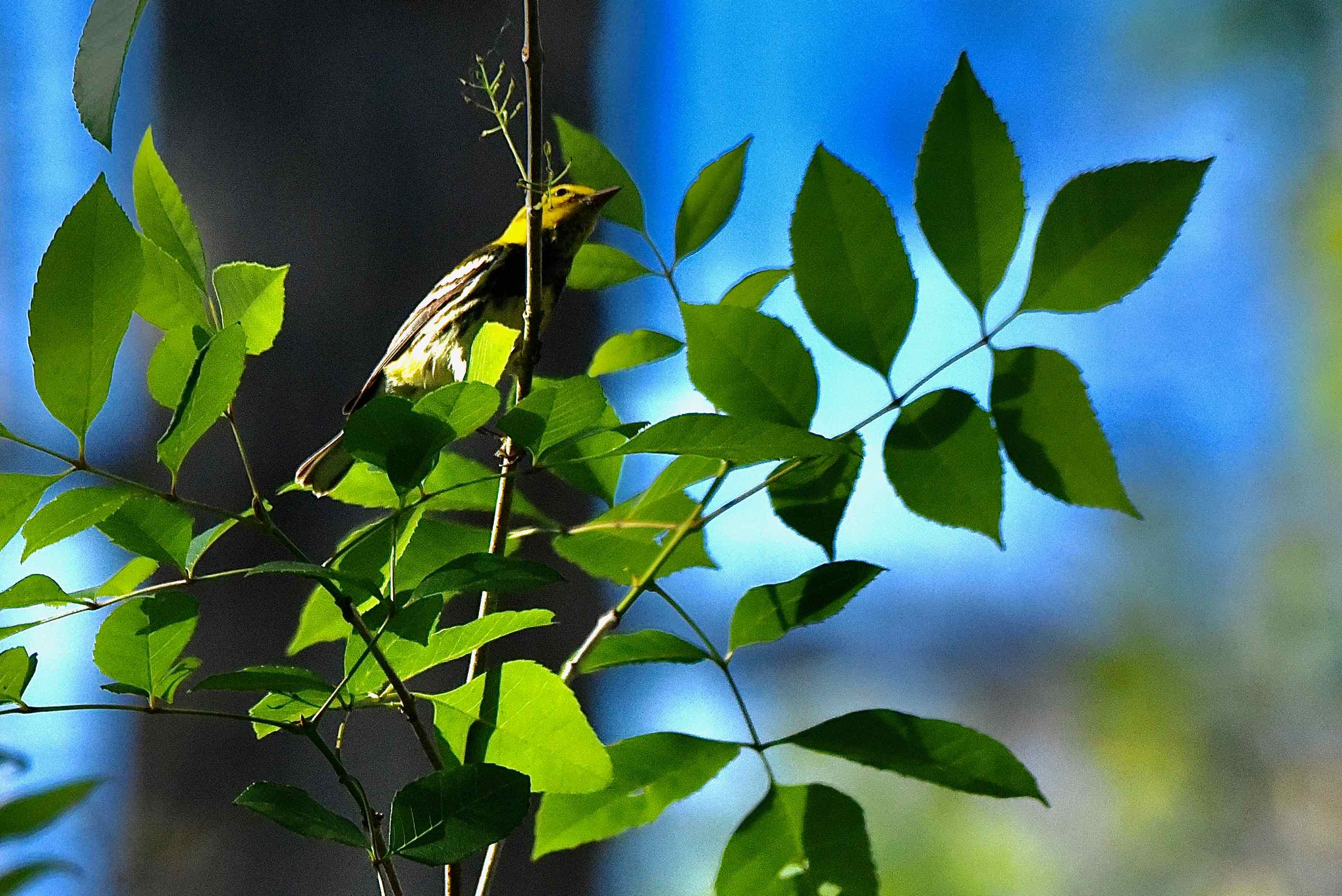
SBlack-throated green warbler, Setophaga virens, photographed at Corkscrew Swamp Sanctuary, Naples, Collier County, in February 2020.
Of all the warblers that come our way in the cooler months, the black-throated green warbler, Setophaga virens, is among the most inconspicuous.
Florida is the northern limit of their winter range, and these birds by-and-large prefer to spend winter in places farther south. It hangs out high in the canopy of mature forests where its small size, barely exceeding 4 inches in length, makes it difficult to spot.
Nesting season is a different story, though, with brightly plumed males often openly perched at the end of a tree branch singing their hearts out declaring their territories and impressing the opposite sex. They make no secret of their presence.
The face of the black-throated green is bright yellow with a black line though the eye; the head and the back is olive green; the wings black, with white bars. The throat and the chest are black, giving way to a mix of black and white barring on the belly. Females are similar but lack the black throat and breast; juveniles have a yellow belly.
The summer range of the black-throated green extends as far west as Alberta and the Canadian Rockies, across Canada to Quebec, Newfoundland and Labrador along the Atlantic Coast, south through New England, the Great Lakes Region and along the Appalachian Mountains as far south as Georgia and Alabama. There’s also a subspecies called Wayne’s (S v waynei, as it’s known scientifically) found in the cypress swamps of coastal Virginia and North Carolina.
During winter, the black-throated green warbler migrates to the Bahamas, the Caribbean, coastal Mexico, Central America, the northern shoulders of South America as well as Florida. It is seen occasionally in Central Florida but more rarely than it is in the south end of the Peninsula.
But wherever it calls home, it lives in forests — conifers up north, mixed hardwoods and cypress in the south. In winter, it tends to take to mature, tall forests as much as possible. Where those forests have been cut down, they’ll find a home in the shade trees of a coffee plantation.
Their menu varies according to the season: during the summer breeding season, they eat mostly insects, with caterpillars gleaned off tree branches a particular favorite. On migration they’ll take to berries, including poison ivy berries, and the pollen and buds of the cecropia genus of tropical trees during its winter retreat. (One species of cecropia is found in South Florida, snakewood or trumpet tree, but it is non-native.)
Males are highly territorial and will defend their turf through song. They’ll also chase and fight any intruders not intimidated by their musical prowess. They’ll also use song to court and win the hearts of the ladies of the species and later to communicate with them after they’ve mated. Females will also join the territorial combat.
Black-throated green warblers build their nests along the trunk of the tree at a branch joint, usually only a few feet off the ground. The Wayne subspecies, however, can build theirs as high as 50 feet off the ground and farther out from the trunk. The nest itself is cup-shaped, made of bark and twigs and spider silk. Females do all the work, usually taking four to eight days to complete the new digs.
We’ve read somewhat conflicting accounts of how these birds brood, particularly the roles of the males. This much is clear: clutches are three to five eggs, which require 12 days of incubation, with all sitting done by mom. Here’s where it gets a little murky: some sources say Mom does all or almost all the feeding while dad stands guard over the nest. Others say mom does the feeding at first, with dad taking over later.
Black-throated greens fledge within 8 to 11 days, and they’ll stay with their parents for a month more before heading off on their own. The brood, however, is split in two during this time, with each parent taking care of half.
Black-throated green warblers have one brood per season, and during the season, the pair is monogamous. Once their brood is raised, they go their separate ways most likely never to meet again. They aren’t long-lived birds, with oldest known black-throated green being five years, 11 months.
The black-throated green population actually has increased substantially over the last half-century, but habitat loss and fragmentation are threats, both in their summer-time homes and their winter retreats. There’s also an invasive bug called woody adelgids is killing off conifers in wide areas of their range, and that’s a problem.
Black-throated greens are members of Parulidae, the wood-warbler family.
Corkscrew Swamp Sanctuary



